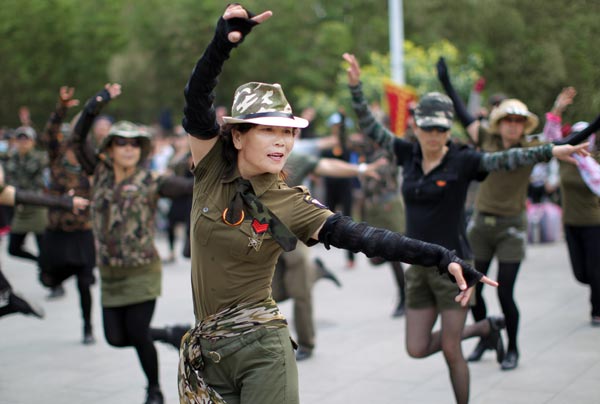Square dancing doesn't deserve stigma
 0 Comment(s)
0 Comment(s) Print
Print E-mail China Daily, April 13, 2015
E-mail China Daily, April 13, 2015
Guangchangwu (square dancing or outdoor dancing) has become a popular recreational activity across China, especially among dama. Just as dama has become a term many use to jocularly describe middle age or elderly women, so too has square dancing become a despised or funny activity for some.
It's time to free square dancing of the bad name for it refreshes the body and mind both.
Square dancing is a low-cost, convenient physical exercise for many women and is thus very important in an aging society like China. The country has more than 200 million people aged 60 or above. And they can remain physically healthy by taking part in square dancing and thus ease the burden on healthcare system.
The general belief has been that square dancing is good for the body. But a recent study by Guangzhou Institute of Physical Education covering 98 dancers says it is also good for the mind. The study shows the mental health condition of the people taking active part in dance activities was conclusively better than those of average people. The dancers scored well in tests that determine factors such as interpersonal sensitivity, depression, anxiety and hostility.
In fact, many foreign studies have found that dancing is beneficial to mental health. The Public Health Report of the US National Library of Medicine says dancing can probably alleviate some symptoms associated with mild to moderate depression. Evidence also suggests that physical activities and exercise could provide a beneficial adjunct for alcoholism and substance abuse, improve self-image, social skills and cognitive functioning. They could also reduce symptoms of anxiety, and alter aspects of coronary prone (Type A) behavior and physiological response to stress. And such activities are even more beneficial when done socially, in a friendly group.
The recent 12 new square dances advocated by State General Administration of Sports have been scientifically worked out to provide the best experience and greatest benefits to those who practice them. A debate is between those who believe in the social advantages and enhanced fitness aspects of the "national choreography" (for the 12 new dance forms) and those who feel they are removed from the artistic and creative motivation of people who like to devise their own sequences to their favorite songs.
The sports authorities have said they are just promoting, not forcing, people to practice the 12 official square dances. And there is nothing wrong in the sports authorities joining the campaign to promote sports at the mass level to help keep people fit.
Of late, many youngsters have joined the dancing, with some big cities even forming professional teams. Although many people don't like the administration-choreographed dance forms, having formal sequences allows event planners to organize contests that can be more judged fairly. When everyone present is aware of how the dance is supposed to look, dancing contests can look like real sports competitions.
The author is a professor in physical studies at Qufu Normal University, Shandong province.







Go to Forum >>0 Comment(s)